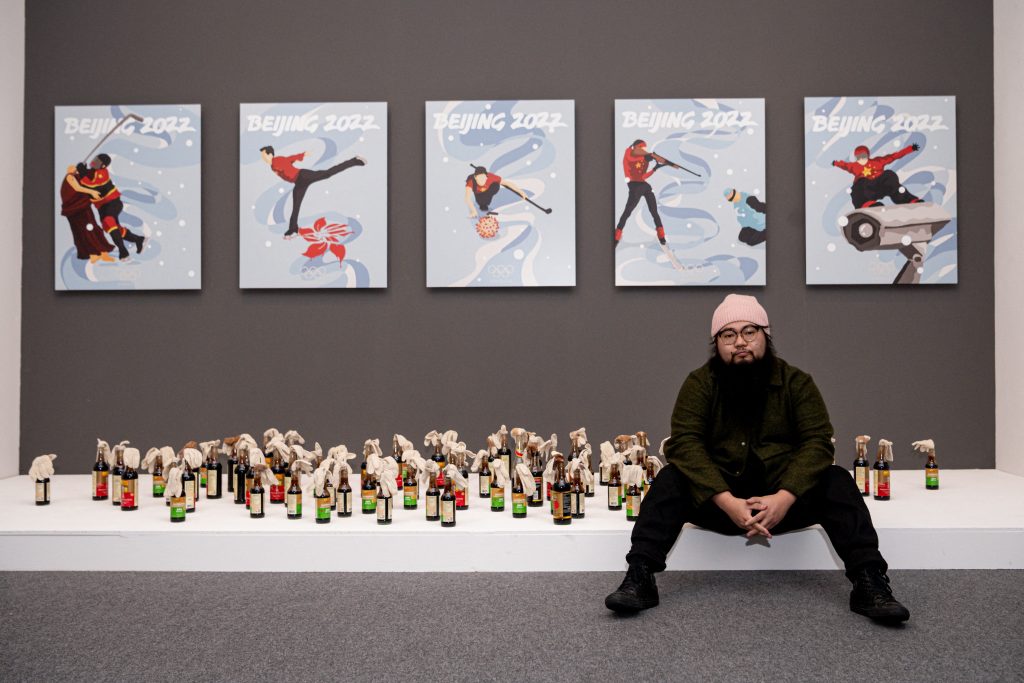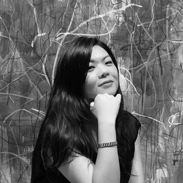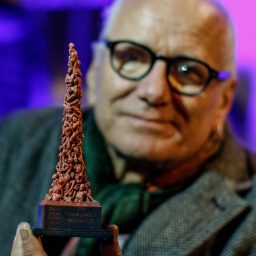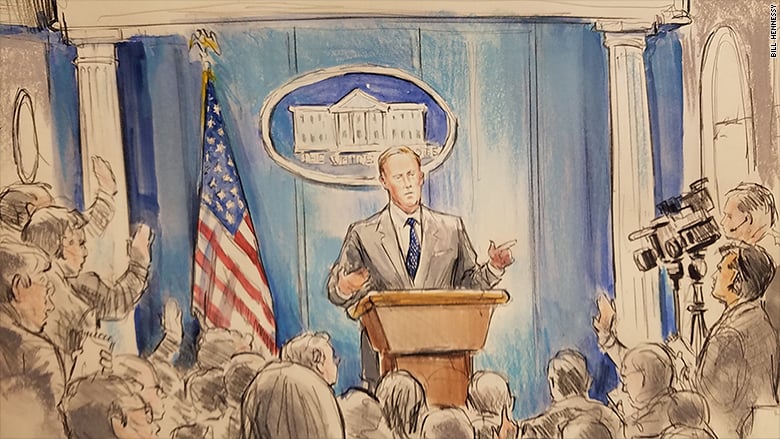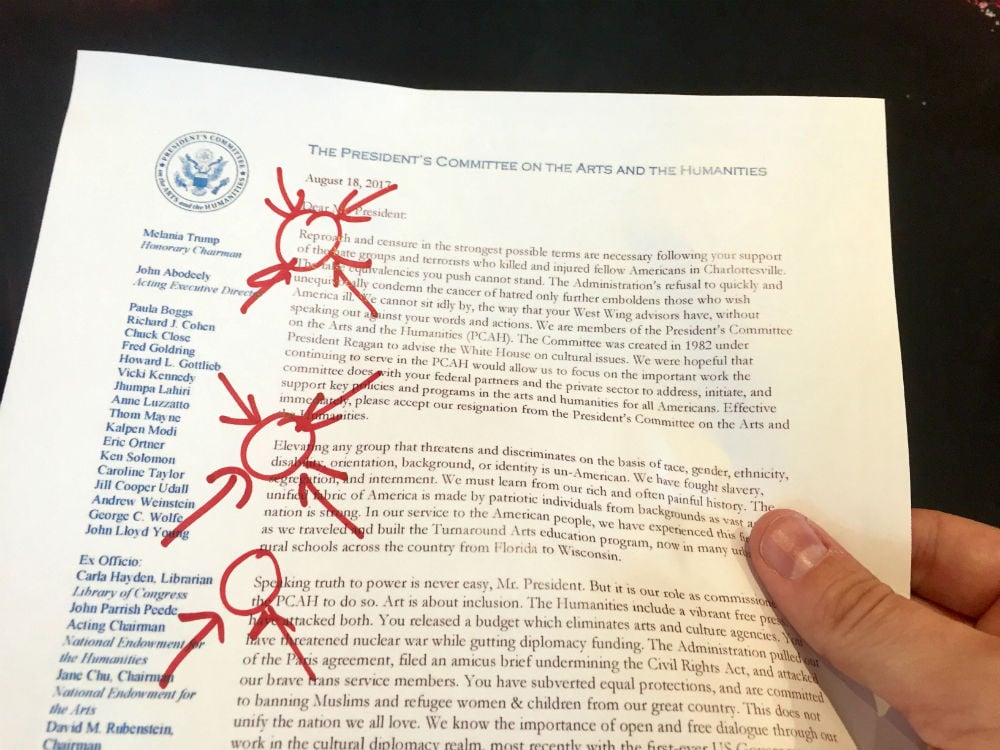Some artists and curators of Chinese descent, living and working in Europe, have said they feel like they must self-censor their work for fear of retaliation by Beijing authorities against their families back home. Others have had shows cancelled through diplomatic pressure by the Chinese Communist Party (CCP), or been surveilled by suspected government actors. And several institutions and local governments in Europe have even been forced to muffle or cancel events that might anger Beijing, because they were afraid of losing Chinese funding or market access, according to the report Whom to Serve? How the CCP censors art in Europe published this month by Index on Censorship.
The non-profit, which champions freedom of expression, interviewed more than 40 art practitioners across Europe for its report, including artists, curators, academics, and expert. It also filed more than 35 freedom of information requests with local museums and galleries to gather evidence of “substantial financial ties and profits accrued from the Chinese market and organizations linked to the CCP.”
The report concluded that the CCP has adopted various techniques to limit the dissemination of critical art via diplomatic pressure, direct threats to individuals, and the propagation of pro-state art to “tell good China stories.” The government has notably tightened its grip on public expression on all fronts, ranging from the media and business to arts and culture, since President Xi Jinping came to power in 2013.
The party has also successfully installed an active self-censorship mechanism among artists and cultural professionals working in Europe, through tactics including surveillance, interrogations, harassment, and physical attacks, Index noted. The organization added that some of those interviewed for the report said threats had been made to their family members in China, Hong Kong, and Taiwan.
Jemimah Steinfeld, editor-in-chief at Index, noted that Beijing previously demonstrated how long its extra-judicial arm stretched in late 2015, when five men associated with Causeway Bay Books were reportedly kidnapped by “special forces” in Hong Kong and Thailand. According one of the booksellers, who was later released, they were transported to mainland China, where they were accused of trading banned books, and detained.
“What this report shows in startling detail is just how far [China’s power] stretches and how common aggressive tactics are,” Steinfeld said in a statement. “The scale of CCP’s reach across the arts world is as staggering as its nature is coordinated. This is not a fringe pursuit or some dabbling at the margins—it is a new and growing weapon in China’s arsenal to burnish its image abroad, control how people both view it and discuss it, and to ruthlessly target those who create or curate art they class as dangerous.”
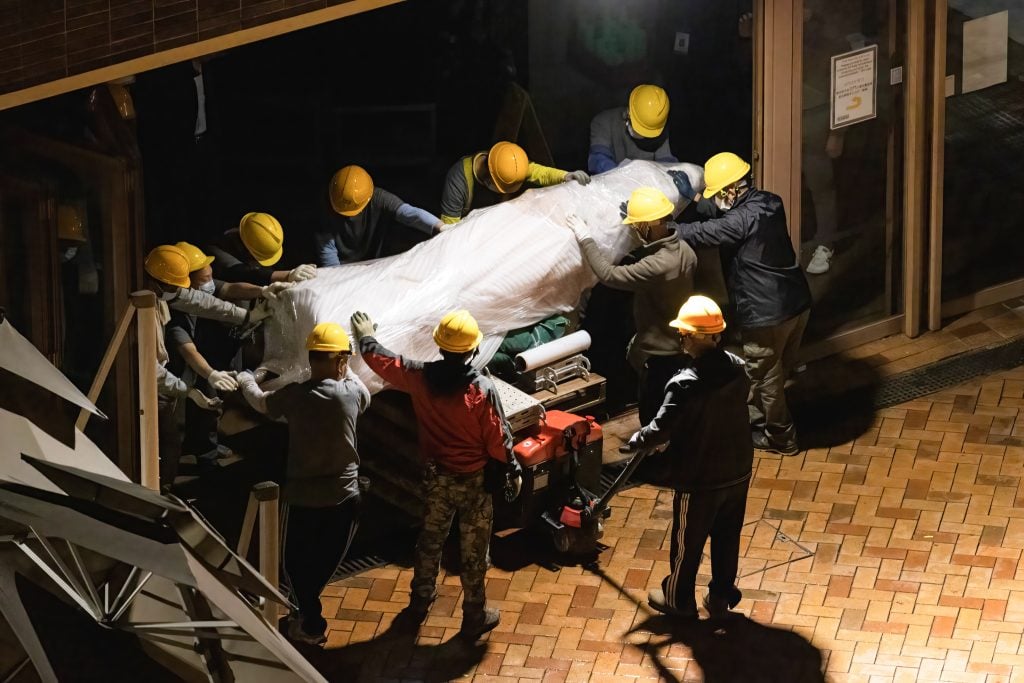
The upper-half of the Pillar of Shame seen being moved by the workers for later transportation, December 23, 2021. Photo: Alex Chan/SOPA Images/LightRocket via Getty Images.
Artists and curators who present works that would anger Beijing have also been facing various forms of censorship. Beijing attempted to shut down exhibitions of work by the Australia-based Chinese dissident artist Badiucao, in Brescia, Italy in 2021, and in Prague in 2022, by sending diplomatic warnings to the city or the institution involved via local Chinese embassies. Both shows went ahead, but such successes are rare, according to Index. “I think that the threat is actually working because I was planning to take the show to more places but we’ve hit a wall again,” Badiucao said in the report.
Such direct attempts at censorship are not limited to artists of Chinese descent, either. In 2018, London’s Royal Court Theatre pulled its staging of Indian playwright Abhishek Majumdar’s show Pah-la, which deals with the 2008 Lhasa Uprising in Tibet, over fears it would jeopardize an arts program in Beijing. The play eventually went ahead, but the Majumdar said he was stalked by suspicious individuals, and he was beaten up after refusing to sell the rights to his play to a Shanghai theater, according to the report.
Many artists and art workers were quoted in the report anonymously, but those who spoke on the record still expressed fears and concerns, explaining why artists feel they have to censor themselves, even when working outside of China.
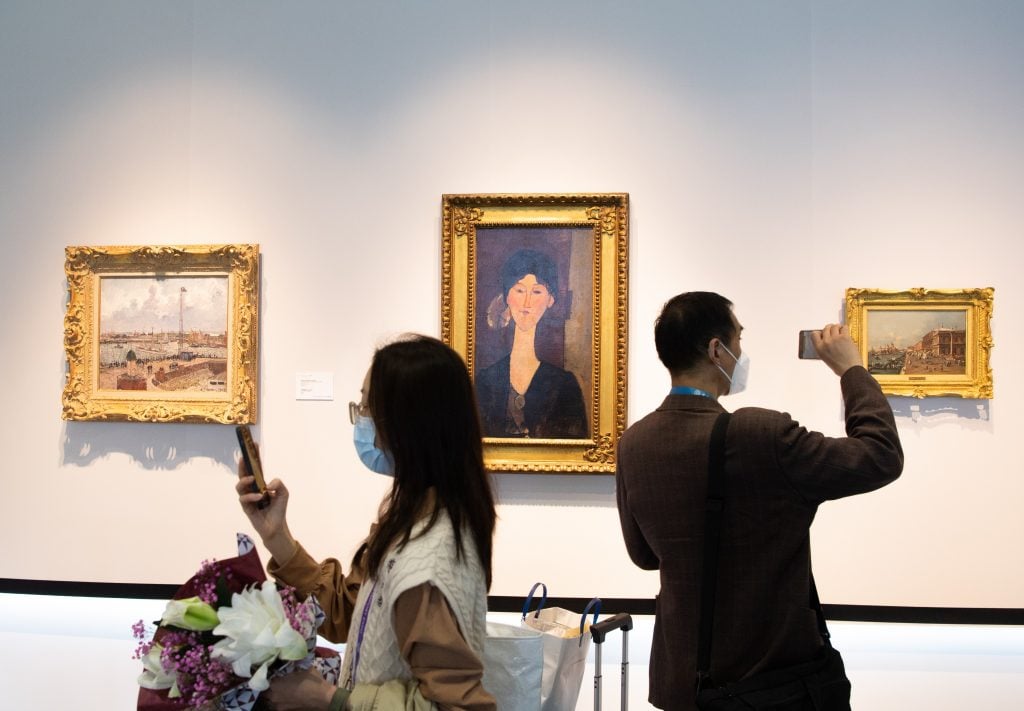
People visit Christie’s booth at the 4th China International Import Expo CIIE in Shanghai, November 7, 2021. Photo: Wu Huiwo/Xinhua via Getty Images.
The outspoken, Beijing-born artist Chiang Seeta, who now lives in France, said his parents had received calls from the police asking them if they knew what their children were up to in Europe. His friends who returned to China, after graduating from school in France, were also interrogated by secret police. But many other artists “have to maintain their cooperation with Chinese institutions in order to keep their income and influence,” and continuing to travel freely between China and Europe, he noted.
A number of political artists fled Hong Kong following the implementation of the national security law in June 2020. The law, which bans activities related to subversion, secession, terrorism, and collusion with foreign forces, has extraterritorial reach. “We worry about our families. Because we know that some of our siblings, even those living in the UK, have family in Hong Kong that are still within reach of the informers or pro-CCP newspapers,” Lumli Lumlong, the Hong Kong political artist duo living in exile in London, told Index “We don’t want our family to become hostages.”
China strong financial ties in Europe has also played a part in the censorship. Jens Galschiøt, who created the sculpture known as the Pillar of Shame, to commemorate the 1989 Tiananmen massacre, told Index that his speech in a town in Denmark was canceled after the town’s mayor intervened, because the local government received substantial investments from China.
The fact that China is a major economic power and one of the largest markets for contemporary art has also become a serious concern, noted Nik Williams, policy and campaigns officer at Index on Censorship. “We remain fearful of how these relationships could inform how institutions engage with dissident artists or sensitive topics,” he said.
More Trending Stories:
The Art World Is Actually Not Very Creative About What It Values. What Would It Take to Change That?
‘It’s My Damaged Rembrandt’: New Book Asserts a Downgraded Portrait of the Dutch Master Is the Real Deal
Introducing the 2022 Burns Halperin Report
Possibly the Oldest Pair of Levi’s Jeans, Salvaged From an 1857 Shipwreck, Just Auctioned for a Deep-Pocketed $114,000
Mr. Brainwash, Made Famous in the Banksy Documentary, Opens His Own Art Museum Where Guests Enter Through the Gift Shop
Click Here to See Our Latest Artnet Auctions, Live Now
Follow Artnet News on Facebook:
Want to stay ahead of the art world? Subscribe to our newsletter to get the breaking news, eye-opening interviews, and incisive critical takes that drive the conversation forward.
